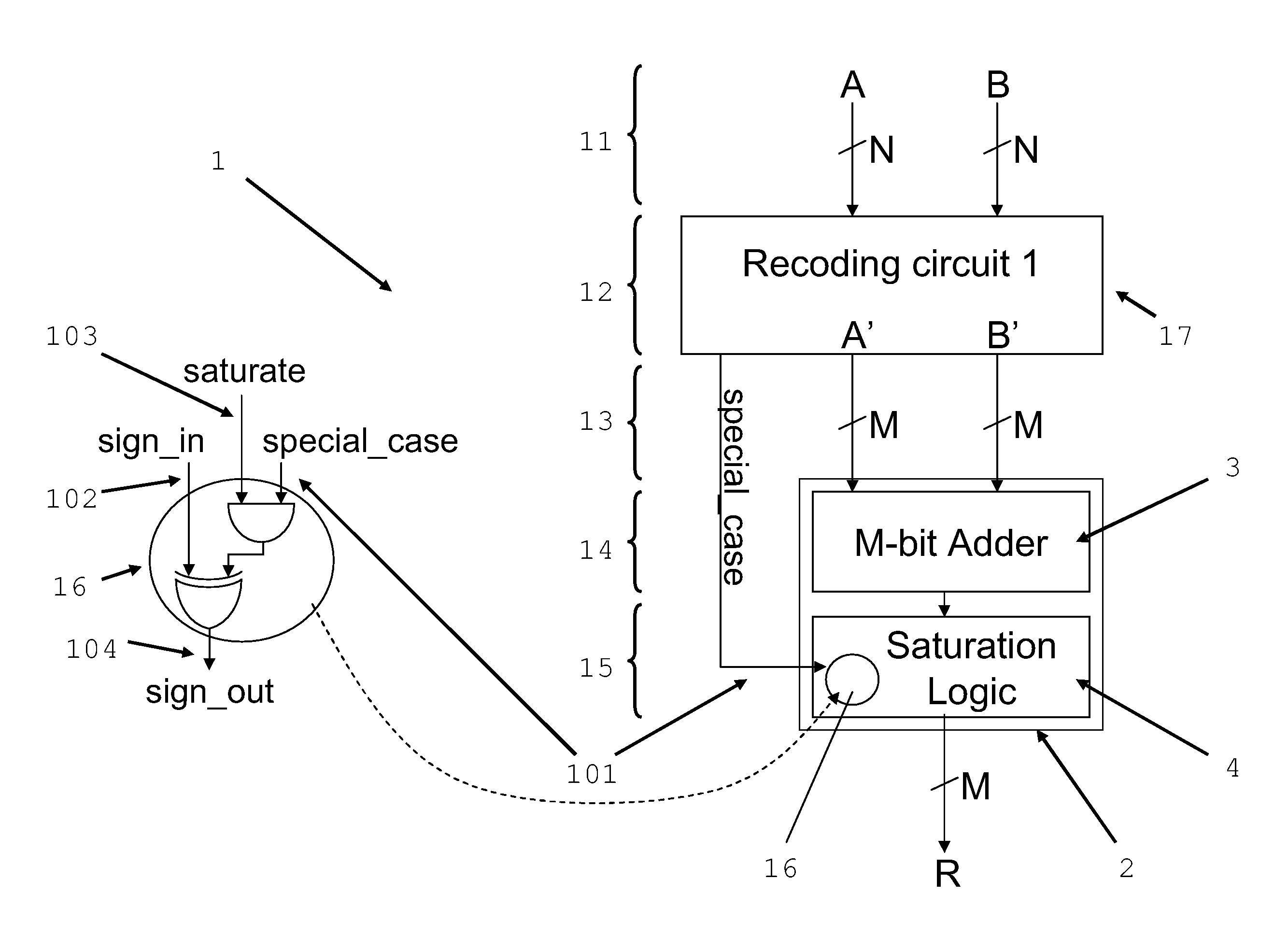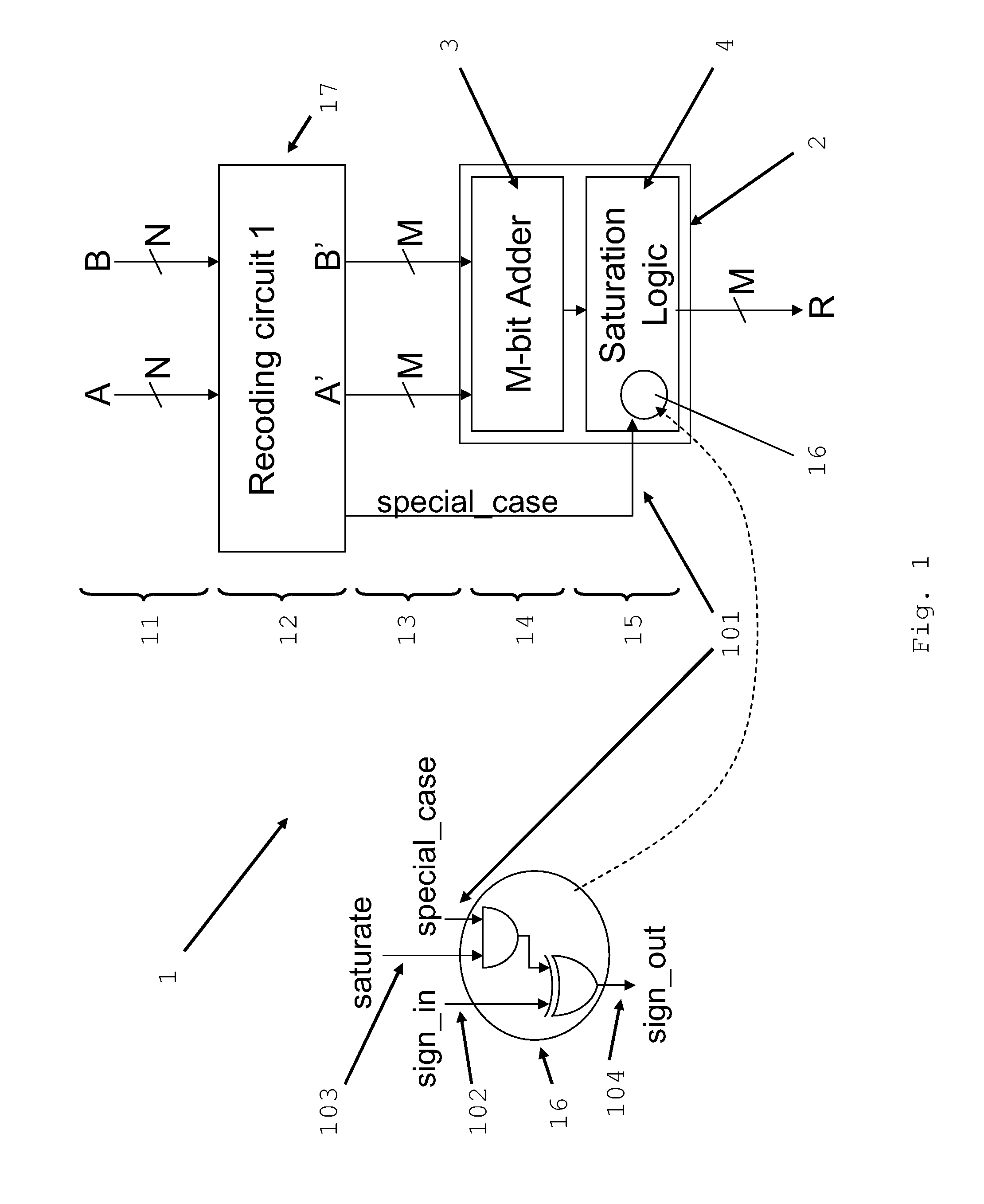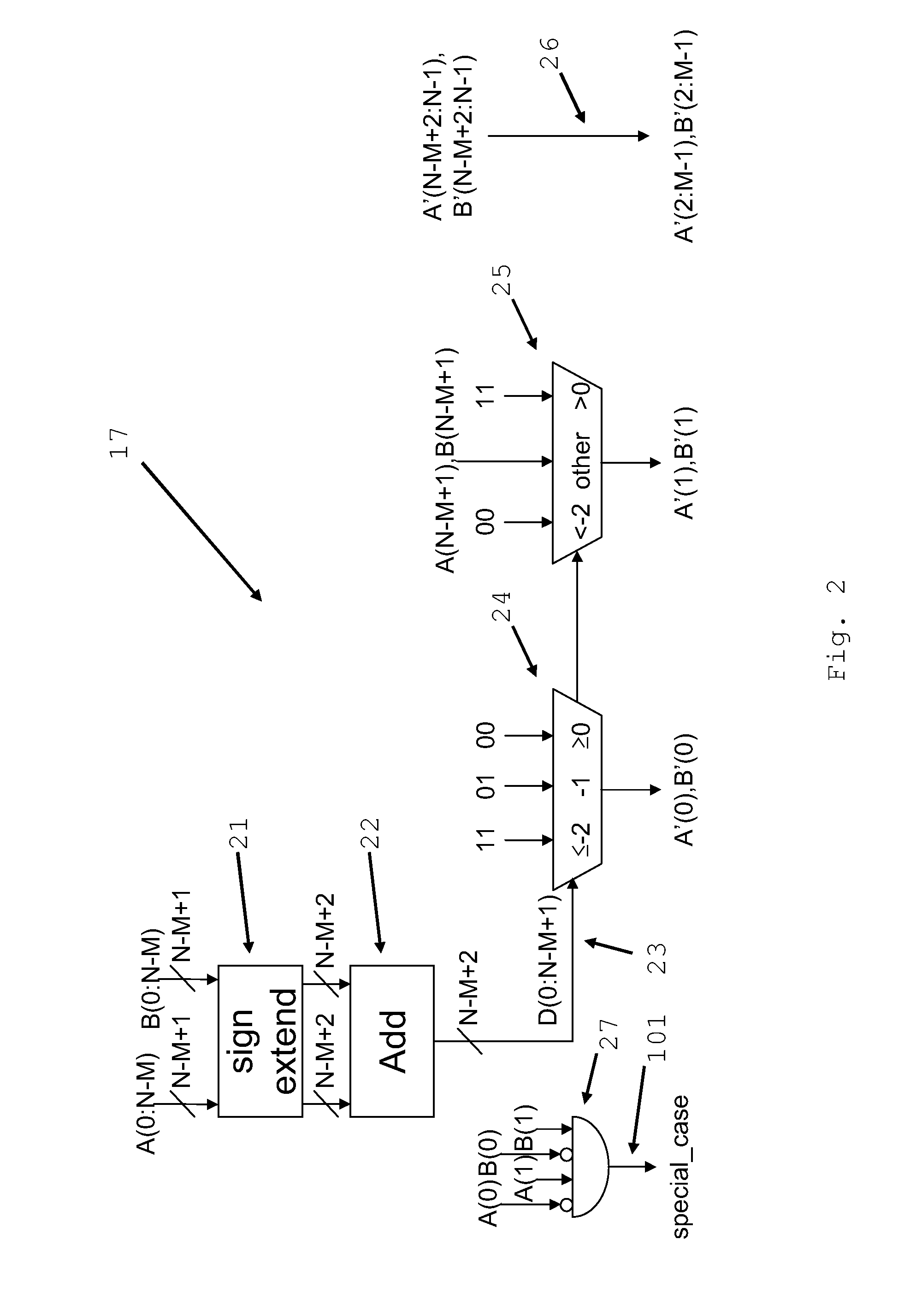Electronic computing circuit for operand width reduction for a modulo adder followed by saturation concurrent message processing
a technology of electronic computing and modulo adder, applied in the field of computer chip design, can solve the problems of increasing the delay of these functions, reducing the design time, and specific instructions sometimes making a more complex design necessary
- Summary
- Abstract
- Description
- Claims
- Application Information
AI Technical Summary
Benefits of technology
Problems solved by technology
Method used
Image
Examples
first embodiment
[0047]FIG. 1. shows a schematic block diagram representation of an electronic computing circuit 1 to be used to perform a first method according to the invention.
[0048]The electronic computing circuit 1 comprises a recoding circuit 17 and a circuit 16 arranged within a saturation circuit 4 of a saturation adder 2. The recoding circuit 17 processes two N-bit input operands A, B of a bit width of N and generates two M-bit output operands A′, B′ of a reduced bit width of M in a way, that a post-processing performed on said two M-bit output operands A′, B′ by the saturation adder 2 provides an M-bit result equal to the M-bit result of an N-bit modulo addition of the two N-bit input operands A, B followed by an saturation to M bits. The saturation adder 2 comprises an M-bit adder 3 and the saturation logic 4 in order to perform an M-bit adder function followed by saturation to M bits.
[0049]In a first step 11 two N-bit input operands A, B with a bit width N are received as input.
[0050]In ...
second embodiment
[0060]FIG. 4. shows a schematic block diagram representation of an electronic computing circuit 5 to be used to perform a second method according to the invention. The electronic computing circuit 5 comprises a recoding circuit 47 and an overflow sign calculation circuit 48. Also the recoding circuit 47 processes two N-bit input operands A, B of a bit width of N and generates two M-bit output operands A′, B′ of a reduced bit width of M in a way, that a post-processing performed on said two M-bit output operands A′, B′ by a saturation adder 6 provides an M-bit result equal to the M-bit result of an N-bit modulo addition of the two N-bit input operands A, B followed by an saturation to M bits. The saturation adder 6 comprises an M-bit adder 7 and the saturation logic 8 in order to perform an M-bit adder function followed by saturation to M bits.
[0061]In a first step 41 the external overflow sign calculation circuit 48 computes an overflow sign signal 49 that indicates the sign of the ...
PUM
 Login to View More
Login to View More Abstract
Description
Claims
Application Information
 Login to View More
Login to View More - R&D
- Intellectual Property
- Life Sciences
- Materials
- Tech Scout
- Unparalleled Data Quality
- Higher Quality Content
- 60% Fewer Hallucinations
Browse by: Latest US Patents, China's latest patents, Technical Efficacy Thesaurus, Application Domain, Technology Topic, Popular Technical Reports.
© 2025 PatSnap. All rights reserved.Legal|Privacy policy|Modern Slavery Act Transparency Statement|Sitemap|About US| Contact US: help@patsnap.com



